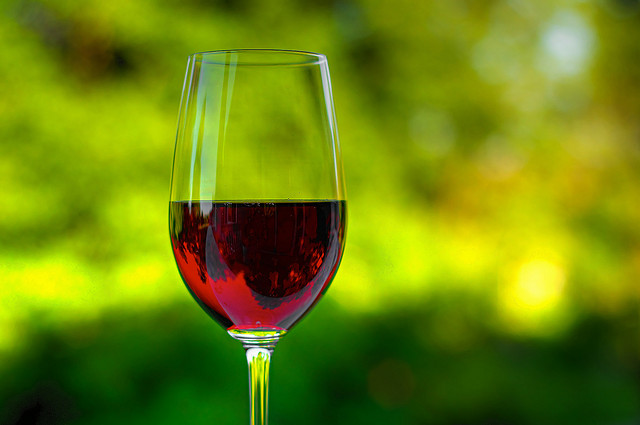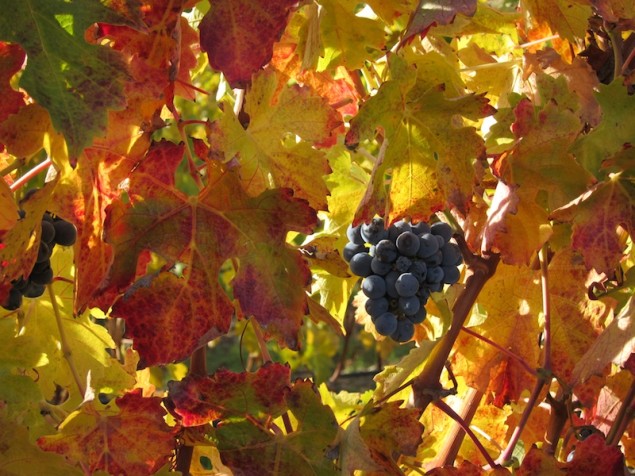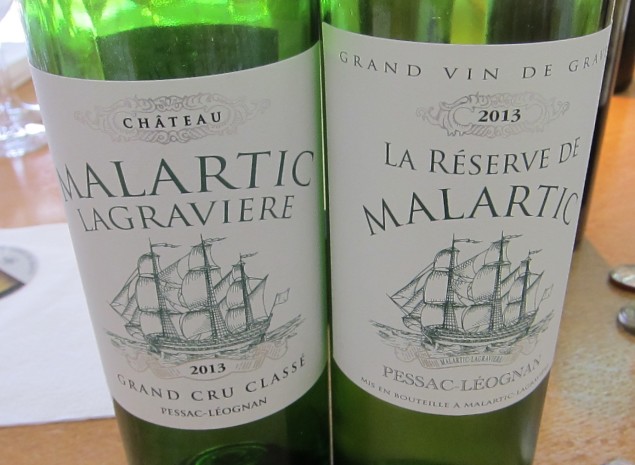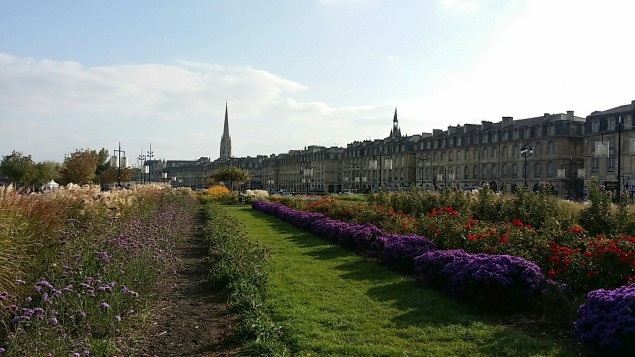
One of my 2015 New Year’s resolutions was to drink smarter and find high-quality wine at a great price. This wasn’t necessarily cheap wine, but wine that offered both value and quality with a special added caveat. I wanted the story about the wine to be as good as the actual product. This is the interesting thing about the living, breathing liquid that so many of us love—wine is all about the passion. There are dozens of products we enjoy every day, but how many of them do you really talk about over dinner conversation? Delving into the nuances of this vintage vs. that, or this soil vs. another can be as exciting as what’s in the bottle.

I found myself in Bordeaux, France in pursuit of such wine, traveling as a guest of the Conseil Interprofessionnel du Vin de Bordeaux (CIVB) on a journey to “(Re)Discover Bordeaux.” We know Bordeaux wines leap to the front of the class in distinction, quality and reputation, but has the beloved region gotten too big for themselves, losing the passion that makes a consumer select a Bordeaux over all others? And, if you found the story filled wine you loved, could you even afford it? Happily, you can, though it may mean stepping off the trail most traveled to discover the gems that exist throughout the beautiful region.

A little background on Bordeaux and how it became the prized wine possession in so many wine collections. Like many regions in France, the first grapes planted in Bordeaux were by the Romans more than 2,000 years ago. The location of the Bordeaux region is in the Southwestern part of France, along the Dordogne and Garonne rivers, with the Gironde estuary just downstream of the centre of Bordeaux city proving beneficial as trading from the port city grew. During the middle ages the world began to understand how special these wines were when Henry Plantagenet, Duke of Normandy and eventual King of England, married the feisty and fearless Eleanor of Aquitaine, formerly the Queen of France who had her marriage to French King Louis VII annulled, marrying Henry 8 weeks after the annulment was finalized, and launching a passion fueled marriage that is still written about today.
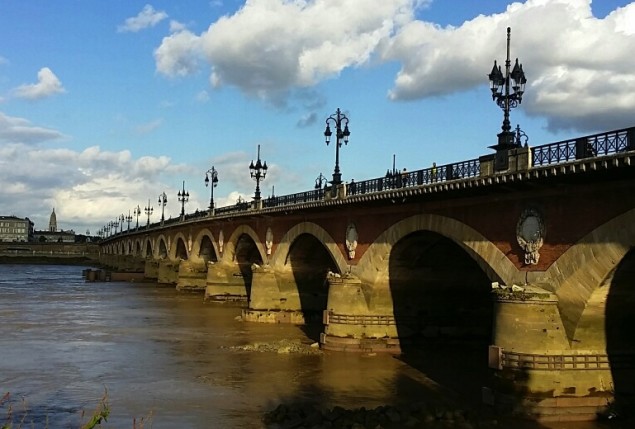
With their marriage, Bordeaux wines, that had mostly been enjoyed only in France, found an international market. The English quickly become quite fond of the Bordeaux claret, one of the main goods of trade. This was extended when Eleanor and Henry’s son, King John of England, stopped the tax on French wine to England, helping further promote the product abroad. The tie between Bordeaux and England thrived even through the Hundred Year War (when France eventually abolished all English from French soil,) as the tie to the region had already been established and the taste for quality Bordeaux wine had developed.
Despite government sanctions by the French trying to keep their wine out of England top bottles of Bordeaux wine continued to show up on auction blocks in London auction houses throughout the mid-1700’s. It is thought that with the help of the Dutch wines from top Chateau found their way onto English soil.
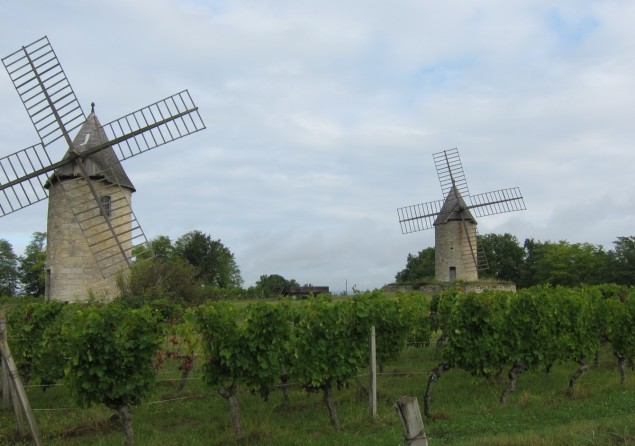
In 1855 French Emperor Napoleon III requested a classification system for France’s best Bordeaux wines that were to be on display for visitors from around the world at the the 1855 Exposition Universelle de Paris. This became the Bordeaux Wine Official Classification of 1855. Wine Brokers ranked the wines according to a château’s reputation and trading price, which at that time was directly related to quality.
The wines were ranked in importance from first to fifth growths (crus). The First Growth (Premiers Crus) at the time were:
- Château Lafite, now Château Lafite Rothschild, Pauillac
- Château Latour, Pauillac
- Château Margaux, Margaux
- Haut-Brion,now Château Haut-Brion, Pessac, Graves
- Mouton, now Château Mouton Rothschild, Pauillac (added in 1973 when it was moved from Second Growth to First Growth)
Four of the five First Growth Chateau are from the Medoc, an area that before the 17th Century was marshlands. In the late 1800’s phylloxera hit Bordeaux, destroying many of their historic vineyards. When grafting began, taking French vines and grafting them onto American, phylloxera resistant, rootstock vintners found some varieties took better to the rootstock than others, particularly Cabernet Sauvignon, Cabernet Franc and Merlot, which quickly became the most widely planted red varieties in the region, Semillion and Sauvignon Blanc the most widely planted white.
Perhaps the most notable region within Bordeaux is the Medoc, on the Left Bank, growing predominantly Cabernet Sauvignon with bits of the other legally allowed varieties, Cabernet Franc, Merlot, Malbec, Petit Verdot and Carmenere. However, the wines of the Right Bank, particularly from St. Emilion and Pomerol, are some of the most refined, elegant and balanced wines produced. The Merlot and Cabernet Franc dominant wines from producers like Angelus, Petrus and Cheval Blanc prove the quality, power and depth of great Merlot based wines from limestone, clay, sand and gravel filled soils.
However, these soils exist throughout the region, as does ideal sun exposure, wind, slope, etc. so the First Growth wines of the Medoc or Premiers Grands Crus of St. Emilion, are not the only Chateau to find quality in the region, especially if you are searching for the soul of a wine, along with great taste.
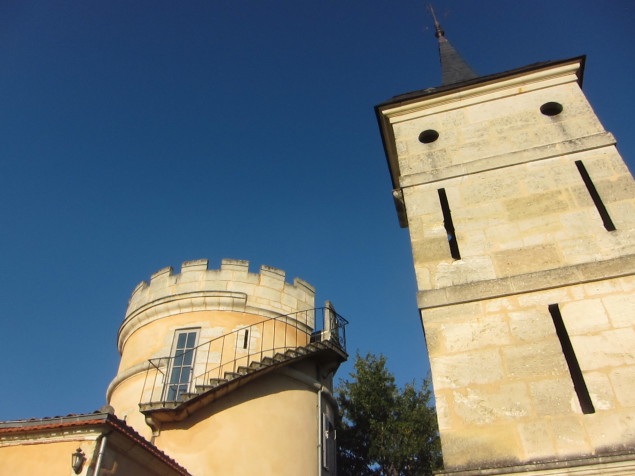
 One of the most northern regions in Bordeaux is Côtes de Blaye with history that dates back 2000+ years to Roman times when the area was orignally planted with vines. Located on the east side of the Garonne river, on Côtes (slopes in French) that stretch over 60 miles from north to south, with excellent exposure to the sun and clay, chalk and limestone filled soils. Here, in certified Biodynamically farmed vineyards, Château Peybonhomme Les Tours is run by 5th and 6th generation winemakers, Jean-Luc and Catherine Hubert, along with their son, Guillaume Hubert, and daughter, Rachelle Hubert-Galand, farming about 170 acres of vines with a focus organic and Biodynamic practices.
One of the most northern regions in Bordeaux is Côtes de Blaye with history that dates back 2000+ years to Roman times when the area was orignally planted with vines. Located on the east side of the Garonne river, on Côtes (slopes in French) that stretch over 60 miles from north to south, with excellent exposure to the sun and clay, chalk and limestone filled soils. Here, in certified Biodynamically farmed vineyards, Château Peybonhomme Les Tours is run by 5th and 6th generation winemakers, Jean-Luc and Catherine Hubert, along with their son, Guillaume Hubert, and daughter, Rachelle Hubert-Galand, farming about 170 acres of vines with a focus organic and Biodynamic practices.
The Chateau building dates back to the 13th and 18th century with the family acquiring the land and house in 1895. The universal point of view in their work is focused on Biodynamic methods,which they adopted in 2000. They found they needed to listen to their vines, and let the vineyard speak to them, thus producing the very finest product they could. The best way to listen to their vines was through clean farming. This not only produces a higher quality wine today, but also ensures a healthier earth for their future, with wines tasting the way they are intended to taste without the use of chemicals.
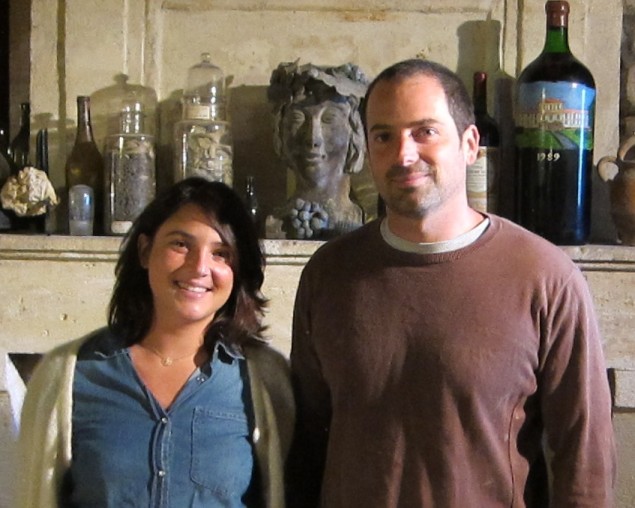
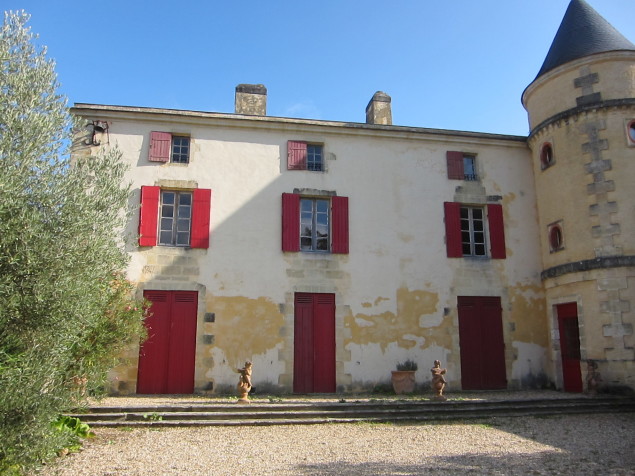
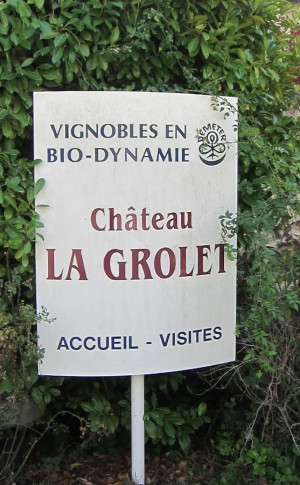 A few years ago the family also acquired Chateau La Grolet, located about 8 kilometers away from Château Peybonhomme Les Tours, in Cotes de Bourg. Though relatively close to each other the two Chateau produce very different wines, with Peybonhomme finding more red fruit notes in the wine and La Grolet producing more mineral driven wines, though both are with a Merlot dominant core.
A few years ago the family also acquired Chateau La Grolet, located about 8 kilometers away from Château Peybonhomme Les Tours, in Cotes de Bourg. Though relatively close to each other the two Chateau produce very different wines, with Peybonhomme finding more red fruit notes in the wine and La Grolet producing more mineral driven wines, though both are with a Merlot dominant core.
Château Peybonhomme Les Tours ($26) is a blend of approximately 70% Merlot with 15% Cabernet Franc, 10% Cabernet Sauvignon and 5% Malbec in clay and limestone soils with traces of fossils dating back to the ice age, adding a definitely mineral quality to the fruit filled wine. Hand harvested by the family, leading to natural, spontaneous fermentation with indigenous yeasts at low temperatures to maintain the red fruit freshness in the wine. Aromatic and balanced with a concentration of fruit, spice and earthiness.
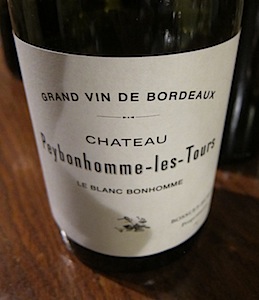 Their fresh Château Peybonhomme Les Tours Le Blanc Bonhomme Cru Bourgeois ($16) blends 50% Semillion with 50% Sauvignon Blanc from Biodynamic vines averaging about 5 years old. Filled with white flower, lemon-lime, just cut grass and soft herbs, and a touch of honeysuckle the balanced white is completely inviting without being complicated. A perfect wine for warm Texas afternoons. Wines are sold through Astor Wine, Candid Wine and Chambers Street.
Their fresh Château Peybonhomme Les Tours Le Blanc Bonhomme Cru Bourgeois ($16) blends 50% Semillion with 50% Sauvignon Blanc from Biodynamic vines averaging about 5 years old. Filled with white flower, lemon-lime, just cut grass and soft herbs, and a touch of honeysuckle the balanced white is completely inviting without being complicated. A perfect wine for warm Texas afternoons. Wines are sold through Astor Wine, Candid Wine and Chambers Street.
A 4th Growth Chateau, with history that dates back to the 15th Century, the 75 hectare (about 220 acres) Chateau Beychevelle sits on the Left Bank in St. Julien, with a few dozen acres of vines also in Haut Medoc. Though changing hands dozens of times over the course of its extensive history, wine has always been made on the property from predominantly Cabernet Sauvignon vines. However, in recent years some of their Cabernet vines are being transitioned to Merlot, especially in the Haut Medoc area as the slightly cooler temperatures are better suited for Merlot. Traditionally the wines have been earthy, bold, tobacco, spice and leather filled with robust and slightly astringent tannins, as a classic Cabernet based Bordeaux tends to be, with the 2009 and 2010 being some of the best vintages from the estate. Both the 2009 and 2010 vintages are available at select Total Wine and More stores for around $120 a bottle.
Nestled in the hillsides of St. Emilion is Château Coutet (AOC Saint-Emilion Grand Cru), next door neighbor to Angelus and Bellevue, two of the most highly acclaimed wineries in the region. One of the few family owned Grand Cru Chateau in St. Emilion, as the region’s quality, expense and popularity has led to large corporations purchasing most of the prominent wineries in the expensive region, Château Coutet has been related to the David Beaulieu family for at least 400 years. Known for their hillside vineyards planted in sandy, limestone and clay at varying degrees and slopes, the wines produced at Coutet are some of the most aromatic and elegant in the region. But beyond their acclaim, the story of this place is truly in the people.
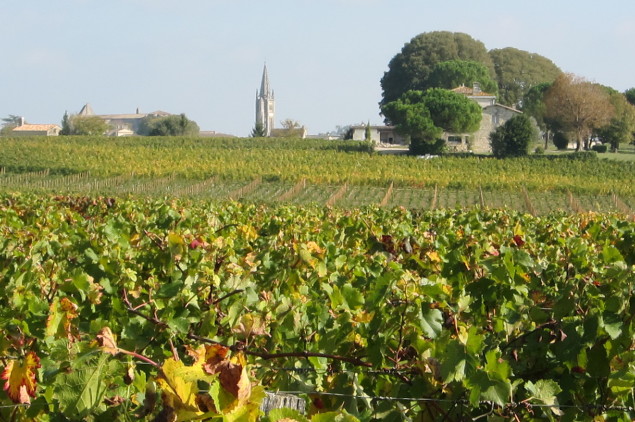
Three generations of the David Beaulieu family are currently living on the property, with the winery run by Alain, manager and winemaker, and his brother Xavier with the following generation, the 14th of the family living at Coutet, also involved in the winery. Adrien is in charge of sales while Matthieu, Mathilde and Raphaëlle are actively engaged in the different activities of the vineyard. We met with Adrien David Beaulieu. Youthful, eager and enthusiastic, with the whimsy of a child expressing the excitement of what the family is doing both environmentally, in their 13 hectares/about 30 acres of vineyards, and in regards to preservation.
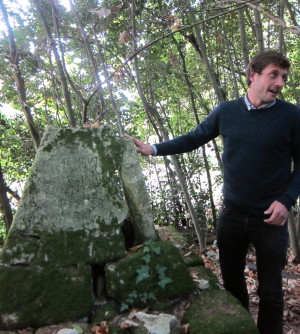
Over the course of the past few years while clearing land for planting ancient fossils have been found, some thought to date back millions of years, as well as Roman ruins, particularly a wall that is thought to have been a Roman postal point, and a stone road with carvings thought to have been made by chariot wheels running along side wild tulips, one of the classic flowers that the Romans were thought to have planted.
The excitement that Adrien exudes when describing each discovery, and how it has helped them become better farmers makes you want to drink these wines. The discovery of the postal point was found by removing a portion of the vineyard that had typically flooded each year. When old vines and brush were removed the wall was found.
The vineyards are organic and Biodynamic, and include a master selection of Merlot vines that the St Emilion Jurade (an institution made up of individuals in the wine trade who supervises the production and the development of ‘fine’ wines,) visits to help determine when harvest will begin each year. The estate, looking to the future and green technologies, makes its land available to research laboratories. The agronomy school of Bordeaux has installed temperature sensors and analyses the micro-bacteriological life developing there.
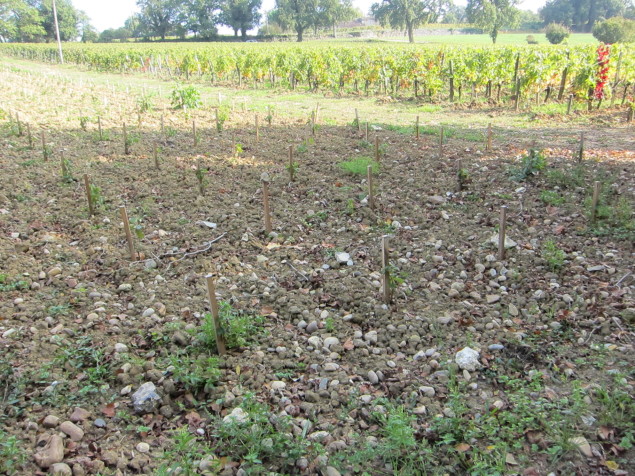
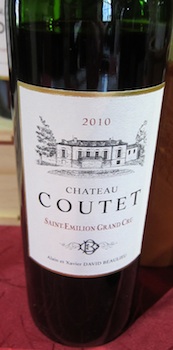 The Chateau cellar dates back to the 1600’s, their Chateau the 1700’s and the family chapel the 1800’s, with Pope Louis XIII noted to have consecrated the chapel in 1892. Though their neighbors have some of the most expensive wine in the region, their wines average about $30 a bottle. Tasting through a few of their latest releases it is easy to understand the quality that is there, that will only be enhanced by time. Their Merlot dominant 2010 Château Coutet Saint Emilion Grande Cru is filled with black fruit (plum, black cherry and blackberry,) purple wild flowers, and tobacco with chewy tannins and bright acidity, most noticeable on the front end of the wine, meaning this should age nicely for the next 10 years. The wine is available at select HEB locations throughout the state and on the wine lists of Winewood and select Eddie V’s.
The Chateau cellar dates back to the 1600’s, their Chateau the 1700’s and the family chapel the 1800’s, with Pope Louis XIII noted to have consecrated the chapel in 1892. Though their neighbors have some of the most expensive wine in the region, their wines average about $30 a bottle. Tasting through a few of their latest releases it is easy to understand the quality that is there, that will only be enhanced by time. Their Merlot dominant 2010 Château Coutet Saint Emilion Grande Cru is filled with black fruit (plum, black cherry and blackberry,) purple wild flowers, and tobacco with chewy tannins and bright acidity, most noticeable on the front end of the wine, meaning this should age nicely for the next 10 years. The wine is available at select HEB locations throughout the state and on the wine lists of Winewood and select Eddie V’s.

 Last fall I wrote of Château Brethous, a favorite stop on this discovering the heart of Bordeaux trip. Cecile Mallié-Verdier, along with her husband, Tierry, manage the family estate which her family purchased in 1963 and she began working there in 1998, transitioning to organic viticulture 10 years later. Cecile met Tierry when he came to work for the family, working the vines and assisting in the winery. And the rest, they say with a romantic twinkle in their eye, is history. The rustic yet inviting atmosphere, focused on clean farming, shows that all that is truly needed to produce excellent wine is good terroir and a hands off approach. Their Chateau Brethous Premier blends over 70% Merlot with Cabernet Franc and a touch of Cabernet Sauvignon, to add texture and help round out the wine. Ripe plum, cassis and cherry meld with a touch of crushed stone, soft herbs and floral notes. Happily, we are now just about a month or so away from the wine arriving in Dallas.
Last fall I wrote of Château Brethous, a favorite stop on this discovering the heart of Bordeaux trip. Cecile Mallié-Verdier, along with her husband, Tierry, manage the family estate which her family purchased in 1963 and she began working there in 1998, transitioning to organic viticulture 10 years later. Cecile met Tierry when he came to work for the family, working the vines and assisting in the winery. And the rest, they say with a romantic twinkle in their eye, is history. The rustic yet inviting atmosphere, focused on clean farming, shows that all that is truly needed to produce excellent wine is good terroir and a hands off approach. Their Chateau Brethous Premier blends over 70% Merlot with Cabernet Franc and a touch of Cabernet Sauvignon, to add texture and help round out the wine. Ripe plum, cassis and cherry meld with a touch of crushed stone, soft herbs and floral notes. Happily, we are now just about a month or so away from the wine arriving in Dallas.
Though it is easy to think of only red wines when thinking of Bordeaux, however there are also delicious dry white wines produced throughout the region from the two leading varieties of the region, Sauvignon Blanc and Semillon, with the later being a personal favorite. Both varieties thrive in the mineral intense soils of the region, particularly in the southern most part of Bordeaux in Graves, Pessac-Leognan and Sauternes. Chateau Malaritic-Lagraviere produces lovely, easy to understand, varietally correct red Bordeaux wines from the Graves region, but the true star here are their whites. The estate was one of only 6 Chateau in Bordeaux to be a part of the 1953 Graves Classification for both red and white wines. The Chateau Malaritic-Lagraviere Blanc blends 80% Sauvignon Blanc with 20% Semillon from sustainably farmed vines. Filled with zesty lemon-lime aromas, green apple, soft herbs, wet stone and slate the fresh and lively wine is balanced and inviting. $78, available at select Goody-Goody locations.
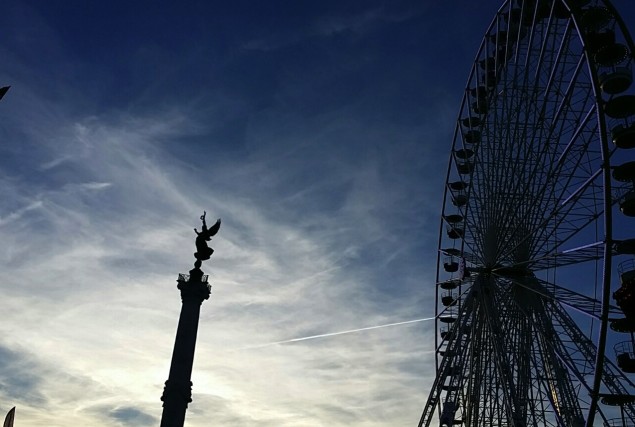
 The last day of our Bordeaux experience was spent in heavenly Sauternes, the land of stellar, sweet, sticky wines.
The last day of our Bordeaux experience was spent in heavenly Sauternes, the land of stellar, sweet, sticky wines.
I will have a post on our time there up shortly.


